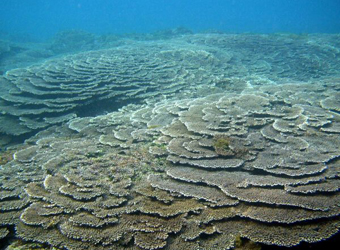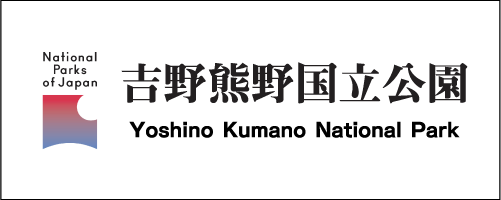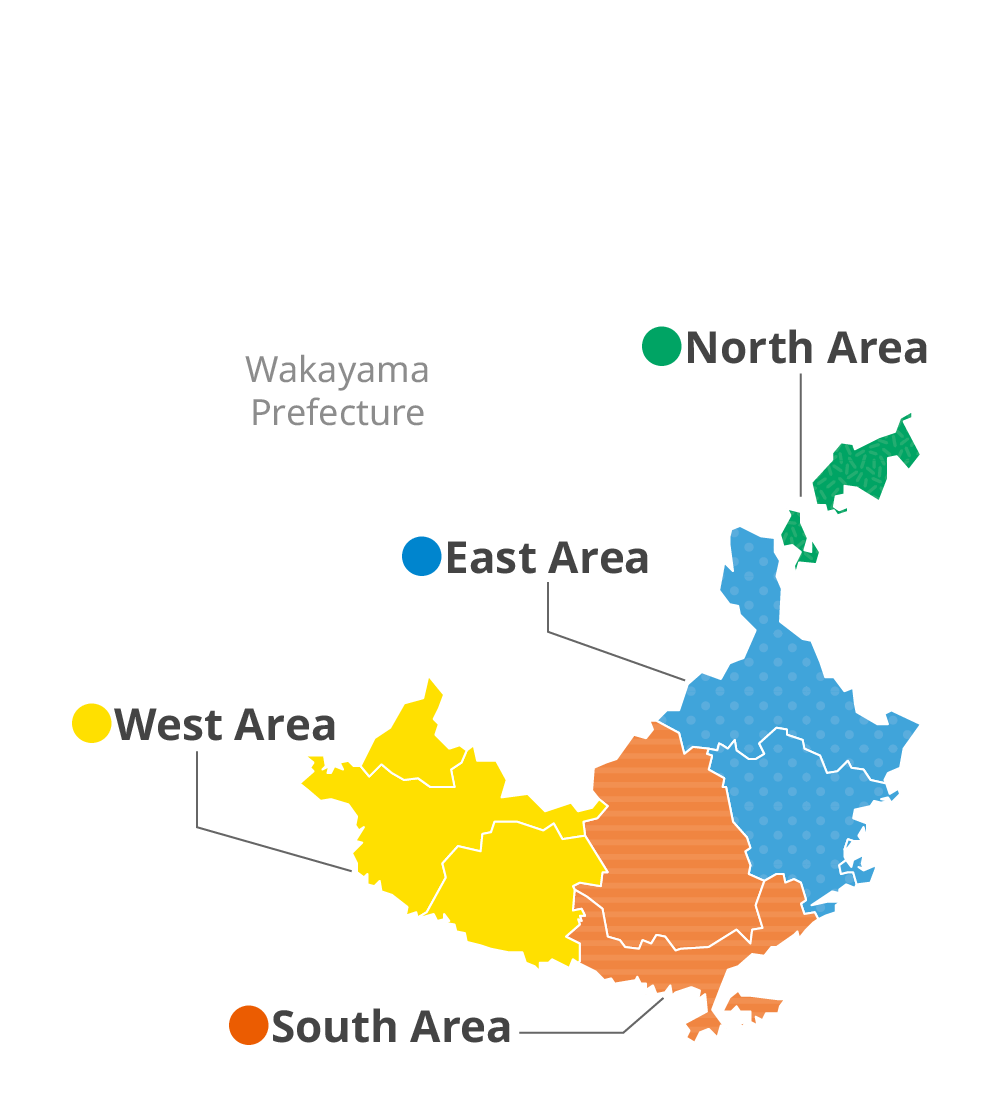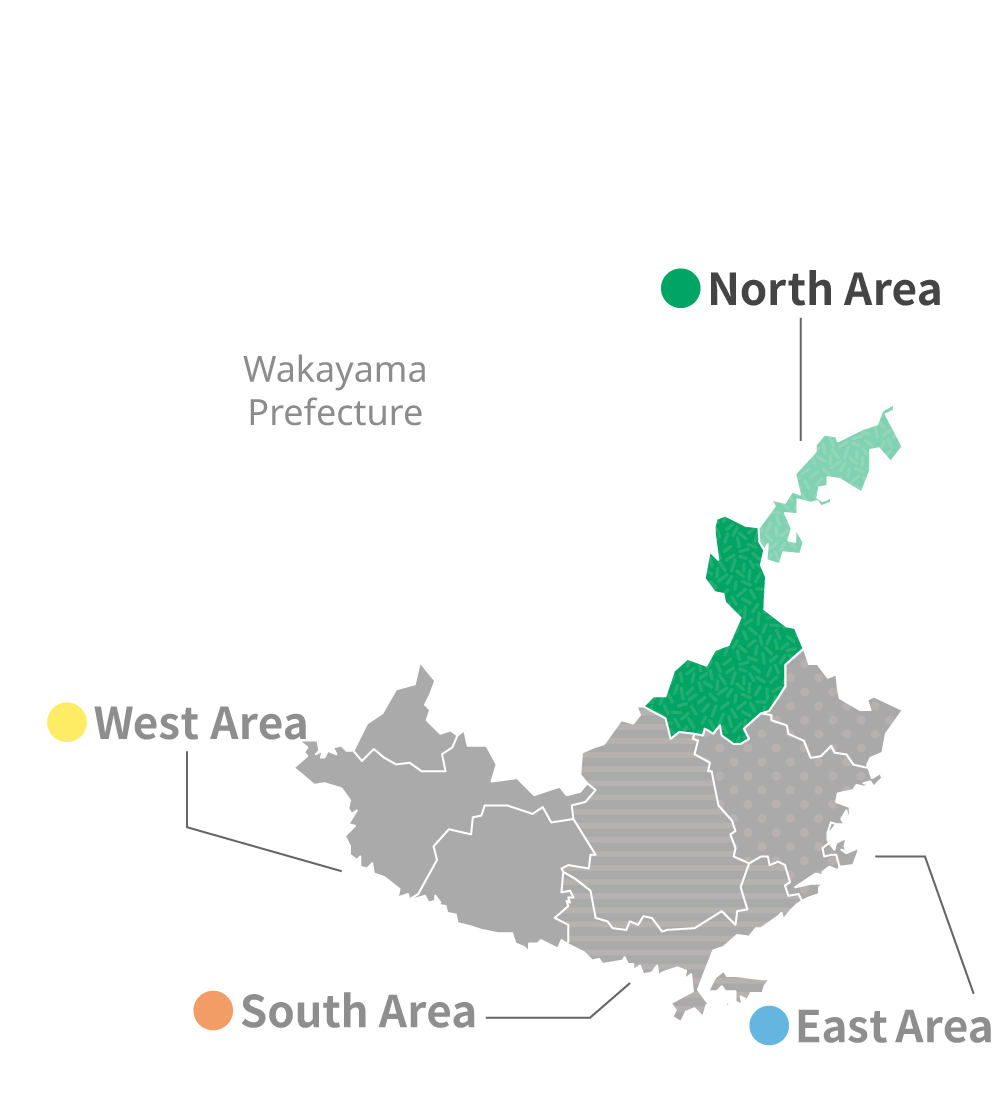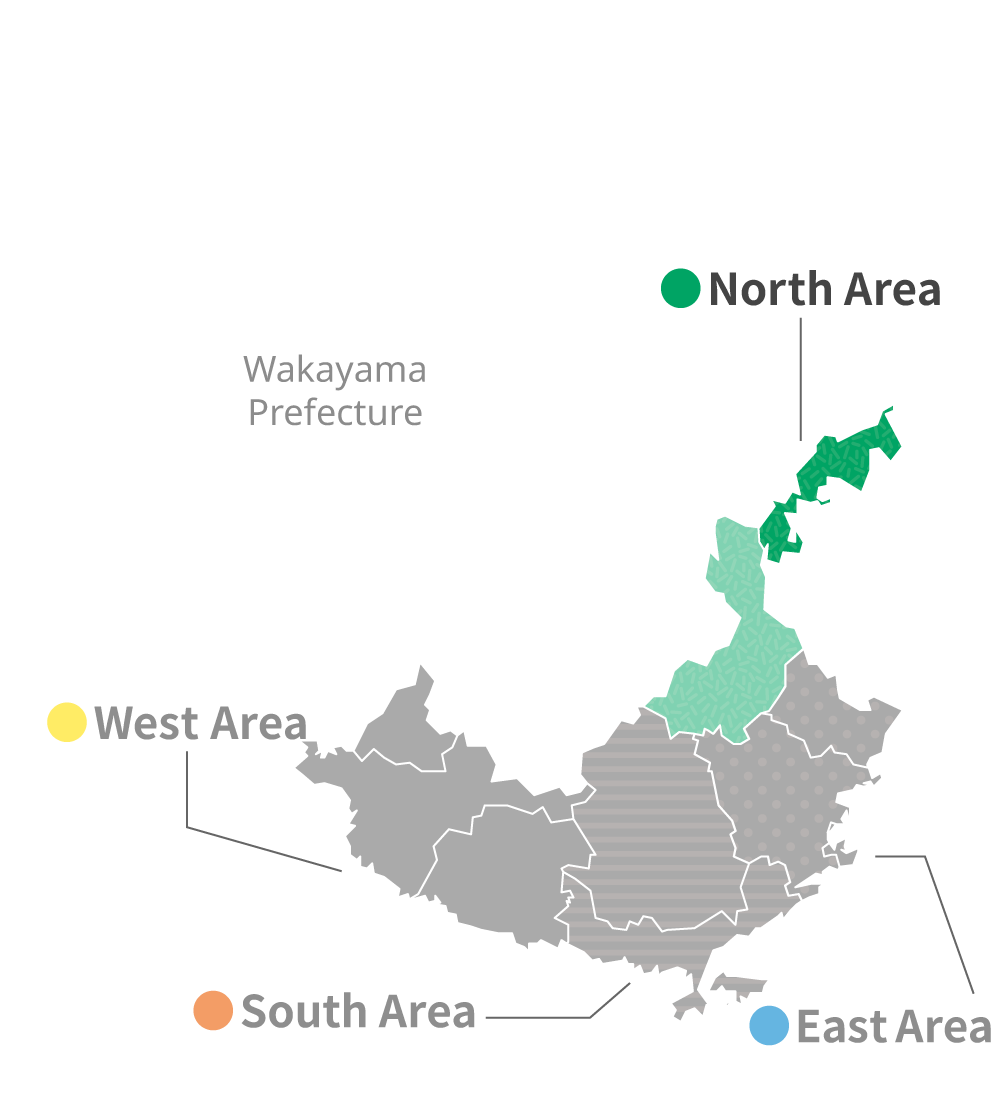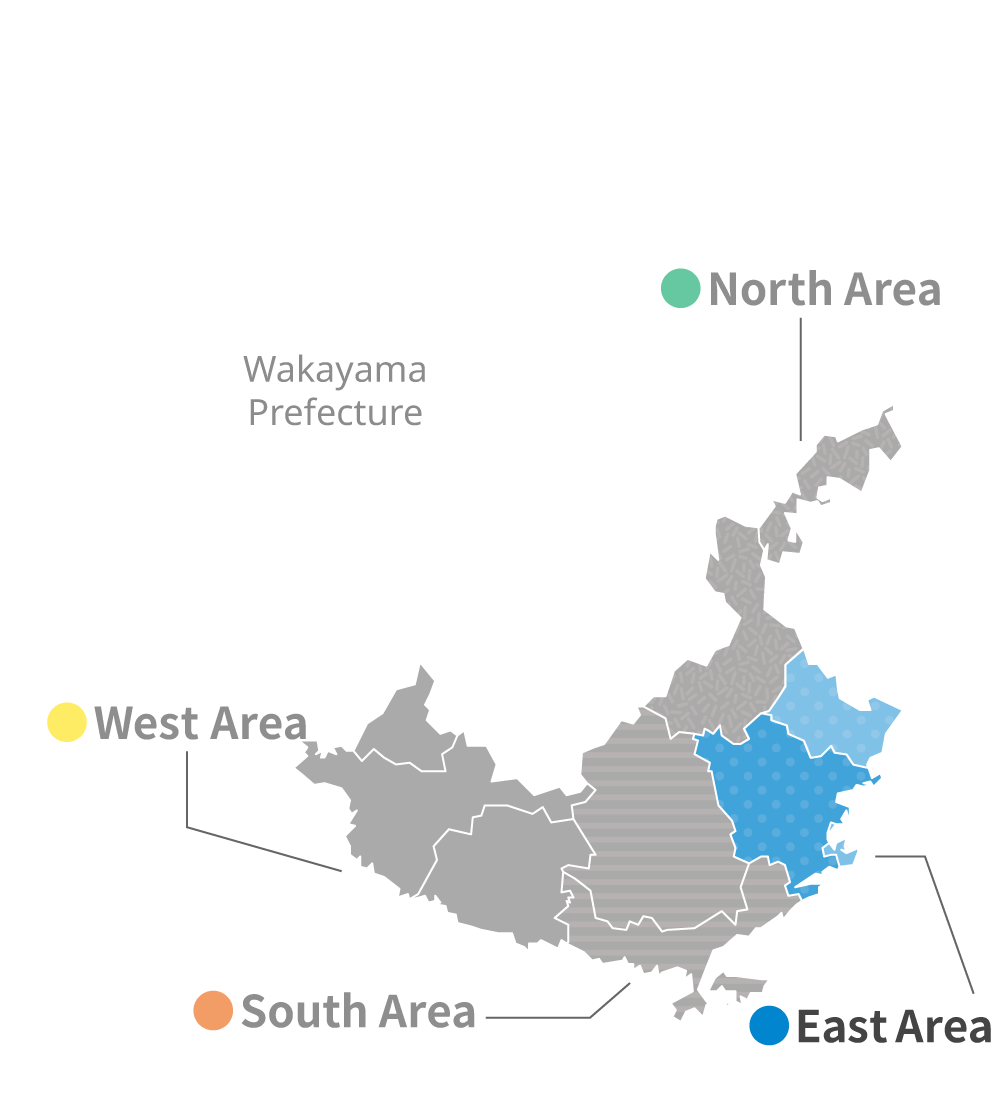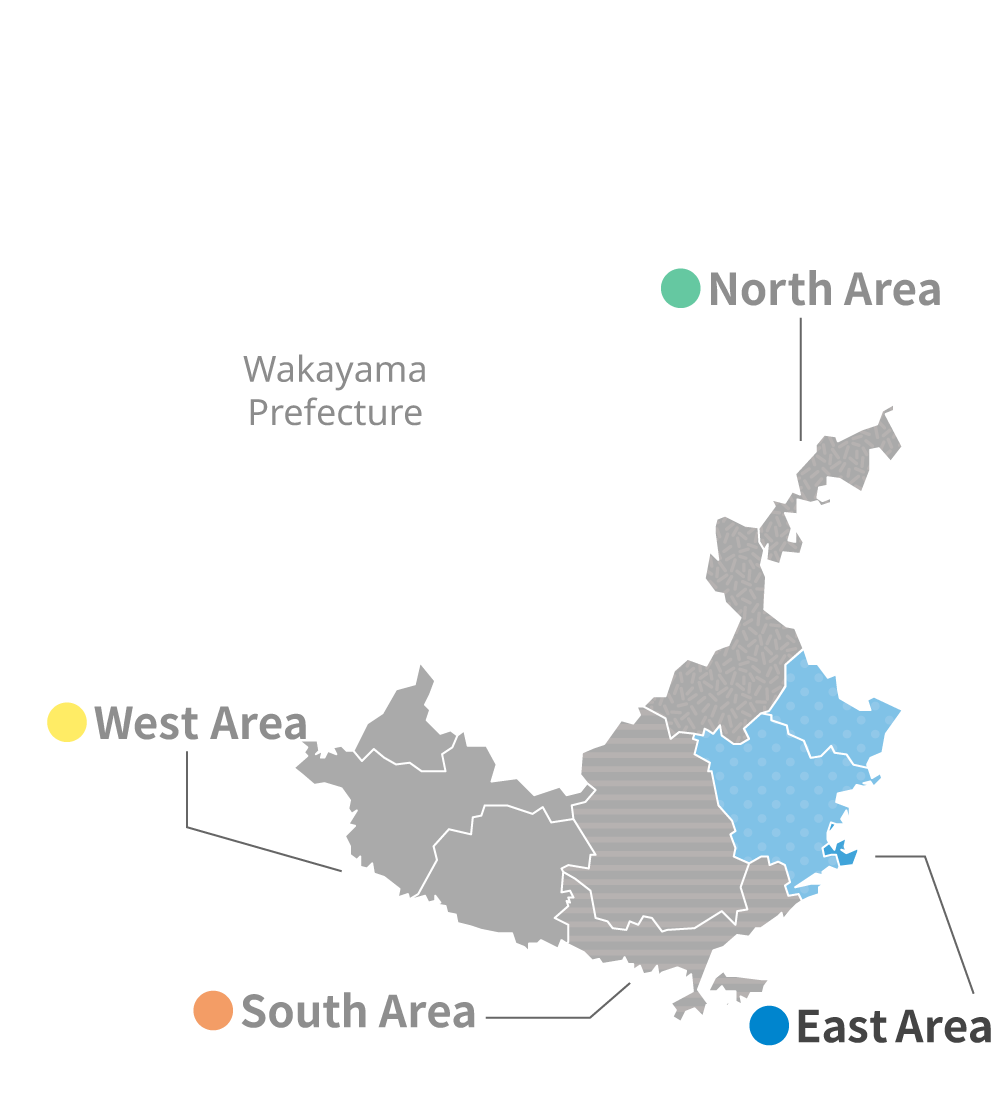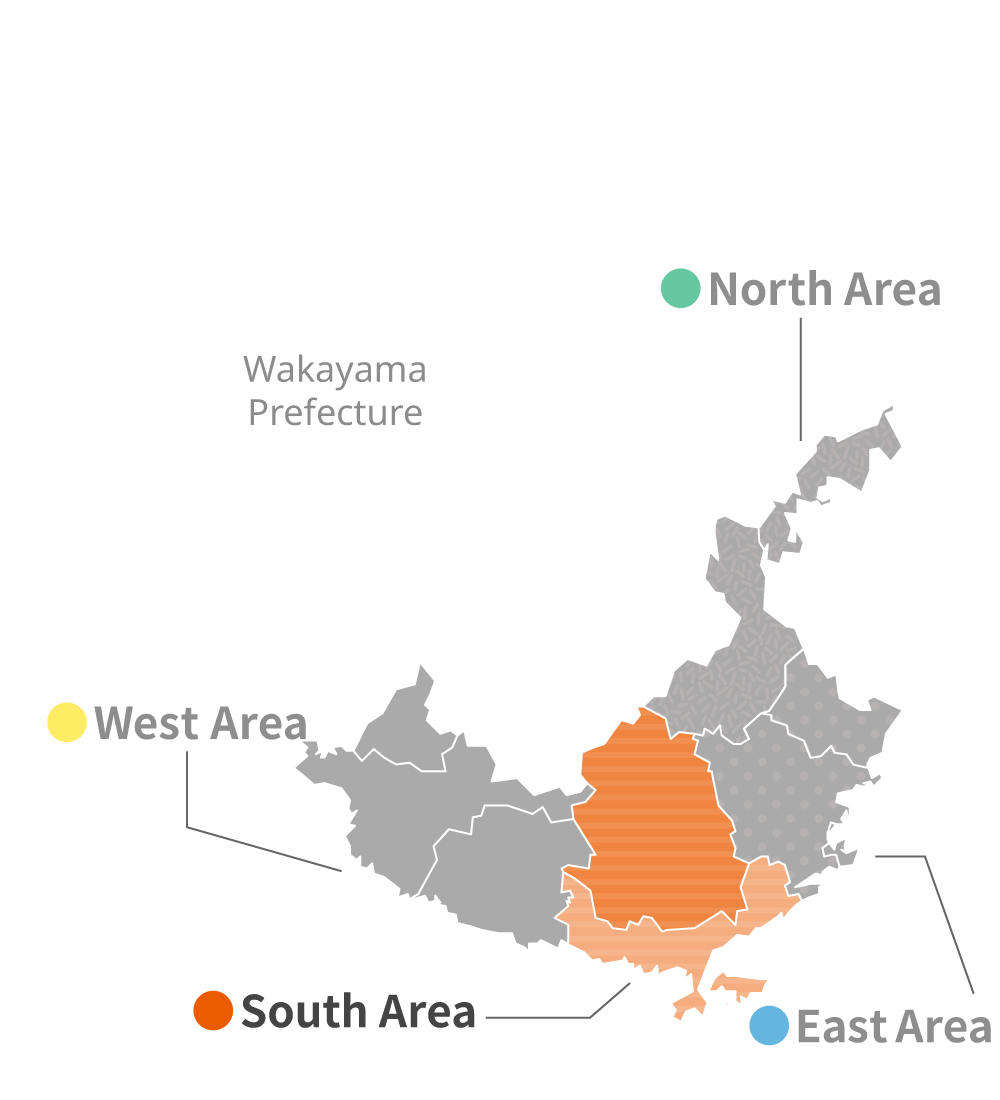Learn about Nanki-Kumano Geopark
Nature
Nanki-Kumano, with its mild climate and abundant rainfall, is home to a wide variety of living creatures.
The following evergreen trees are commonly found in the coastal areas:
- Ubame-gashi oak (Quercus phillyraeoides): A member of the oak tree family that grows abundantly in warm, near-coastal mountainous areas. Its wood has been used for making binchotan, one of the most premium types of charcoal in Japan.
- Sudajii (Castanopsis sieboldii subsp. sieboldii): An evergreen broadleaf tree related to beech. It produces edible acorns that were a food source in ancient time.
- Yabu-tsubaki camellia (Camellia japonica): A typical tree of Japanese evergreen forests,This tree, a type of camellia, is known for its stunning red or white flowers.
- Tobera (Pittosporum tobira): Adapted to dry conditions, Tobira thrives on coastal cliffs and is often planted in roadside greenery. While its distinctive fragrance may not be for everyone, it is traditionally believed to ward off evil spirits and bring good luck.
In addition, the following organisms can be seen in this forest:
- Shiino-tomoshibi-take (Mycena lux-coeli): This bioluminescent fungus thrives in coastal areas of the southern Kii Peninsula, where it illuminates the night with its otherworldly glow. Its scientific name, “lux-coeli,” translates to “heavenly light,” aptly reflecting its ethereal beauty. Shiino-tomoshib-itake grows on decaying wood, particularly that of the sudajii tree.
- Ryubin-tai (Angiopteris lygodiifolia): A giant fern native to southern regions, Ryubintai flourishes in the dimly lit forests of warm areas. Its name in Japanese, “ryubin-tai,” translates to “dragon’s beard,” alluding to the wild, cascading appearance of its fronds.
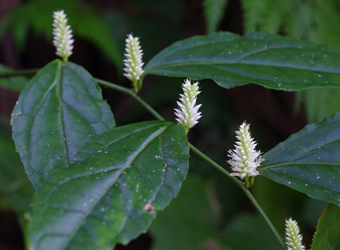
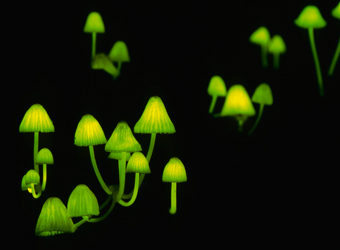
In contrast, higher-elevation mountain regions favor deciduous trees like beech. Here, you’ll find a collection of rare and endemic plant species:
- Kijourou-hototogisu (Tricyrtis macranthopsis): This elegant endemic lily (Liliaceae family) graces the Kii Peninsula, adorning rocks and cliffs in mountain valleys with its drooping stems and beautiful, bell-shaped yellow flowers.
- Kinokuni-suzukake (Veronicastrum tagawae): A Japanese endemic perennial herb found exclusively in Wakayama Prefecture. Look for its white flowers adorning drooping stems in forests along valleys.
- Oo-mamakona (Melampyrum macranthum): This recently discovered endangered species is restricted to the forests of Kozagawa and Kushimoto towns. Its flowers have a unique, elongated shape.
- Himeno-botan (Osbeckia chinensis L.): This perennial thrives in sunny mountain areas, boasting small, captivating pale purple or white flowers. Unfortunately, environmental changes threaten its population.
- Toga-sawara (Pseudotsuga japonica): This “living fossil” is a Japanese endemic conifer similar to hemlock and fir. Fossils of its kin have been unearthed throughout the northern hemisphere.
Numerous uncommon animal species inhabit the region:
-
Yamane (Glirulus japonicus): This creature, resembling a mouse but closer to a squirrel, is nocturnal and lives mainly in trees. With its bushy tail, it’s beloved for its adorable appearance when curled up in sleep.
-
Yachi-nezumi (Eothenomys andersoni): Translating to “valley-dwelling mouse,” this rare mouse species has adapted to thrive in high-altitude mountains and rocky stream areas.
-
Uchiyama-sennyu or Styan’s grasshopper warbler (Locustella pleskei): A rare migratory bird traveling between mainland China and Japan, nesting on a few Japanese islands and coasts. Due to its cautious nature, it only vocalizes during breeding, making breeding sites valuable for observation.
-
Nanki-uranami-akashijimi (Japonica saepestriata gotohi): This butterfly is exclusive to the southern Kii Peninsula, with larvae feeding on ubame-gashi leaves, a species of oak frequently found along the coast in the region.
The area is home to the only large breeding site of the Yubinaga-koumori or Eastern bent-winged bat (Miniopterus fuliginosus) in the Kinki region. It is also an important habitat for the Oo-unagi or giant mottled eel (Anguilla marmorata), which is near the northern limit of its distribution.
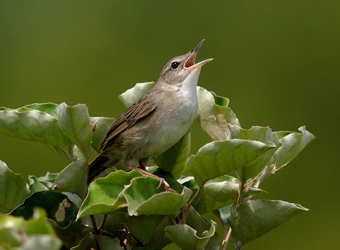
In addition to the above, the area is home to four important wetlands that have been selected as one of the 500 most important wetlands in terms of biodiversity in Japan.
The Nanki-Kumano region’s western coast is known for its powerful waves. The Kuroshio Current, a warm current sweeping up from the tropics, heavily influences this coast. This unique blend of currents fosters species from both temperate and subtropical zones.
Kushimoto, a town at the southern tip, boasts the world’s northernmost large-scale coral reef community, a designated Ramsar Convention wetland site. The deep ocean meets the coast along the west side of Nanki-Kumano. Nutrient-rich waters rise from the depths, fueled by the Kuroshio Current and others, creating a vibrant and diverse marine ecosystem. This abundance attracts large whales like sperm whales and humpbacks, which visitors can sometimes spot from the shore.
